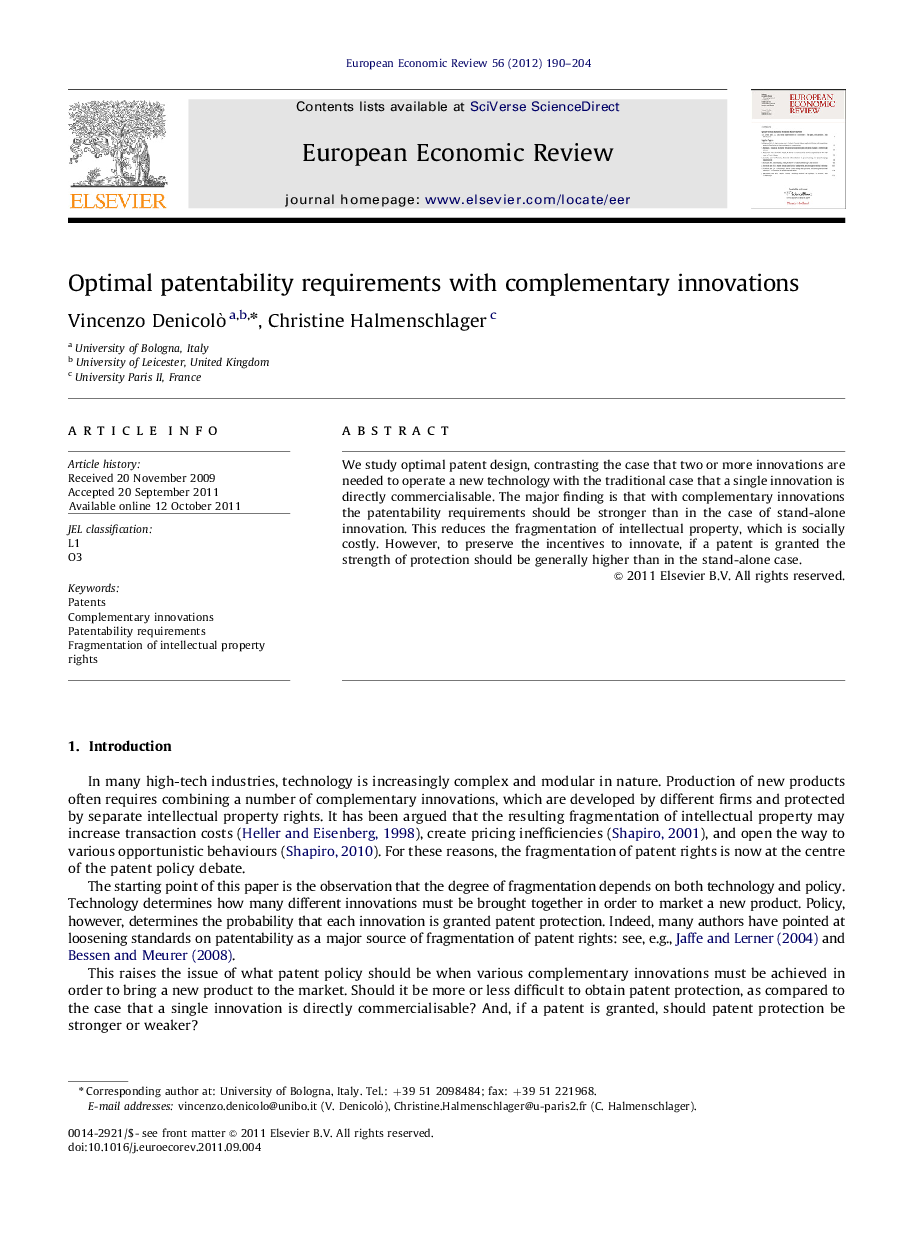| Article ID | Journal | Published Year | Pages | File Type |
|---|---|---|---|---|
| 5067217 | European Economic Review | 2012 | 15 Pages |
We study optimal patent design, contrasting the case that two or more innovations are needed to operate a new technology with the traditional case that a single innovation is directly commercialisable. The major finding is that with complementary innovations the patentability requirements should be stronger than in the case of stand-alone innovation. This reduces the fragmentation of intellectual property, which is socially costly. However, to preserve the incentives to innovate, if a patent is granted the strength of protection should be generally higher than in the stand-alone case.
⺠We study optimal patent design with complementary innovations. ⺠We contrast this with the traditional case of independent innovations. ⺠With complementary innovations, the patentability requirements should be stronger. ⺠This reduces the fragmentation of intellectual property. ⺠However, when a patent is granted the strength of protection should be generally higher.
